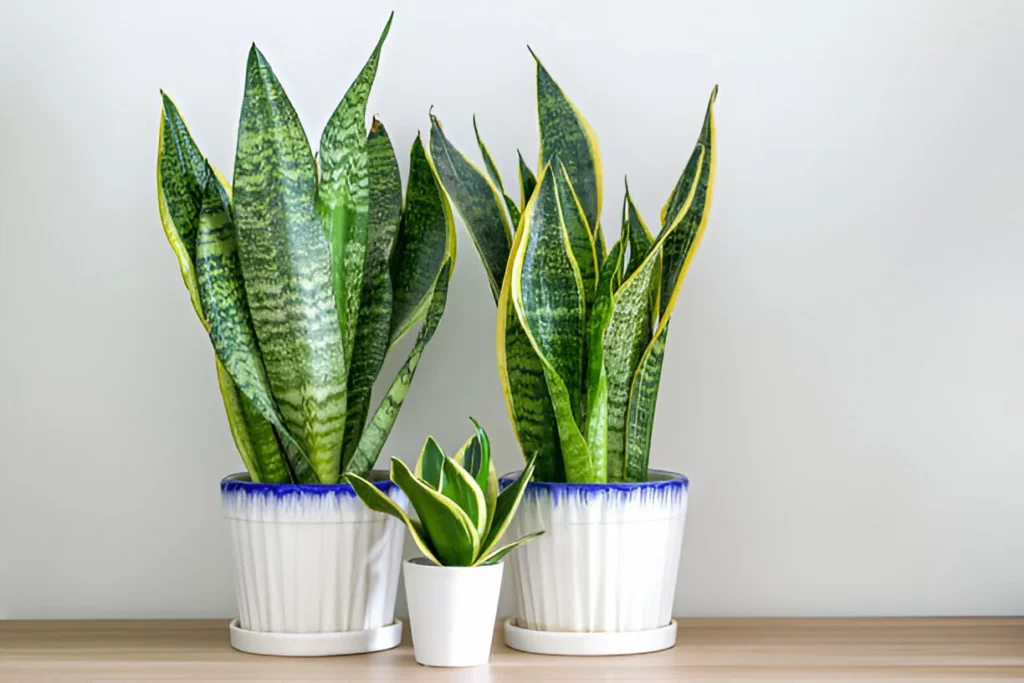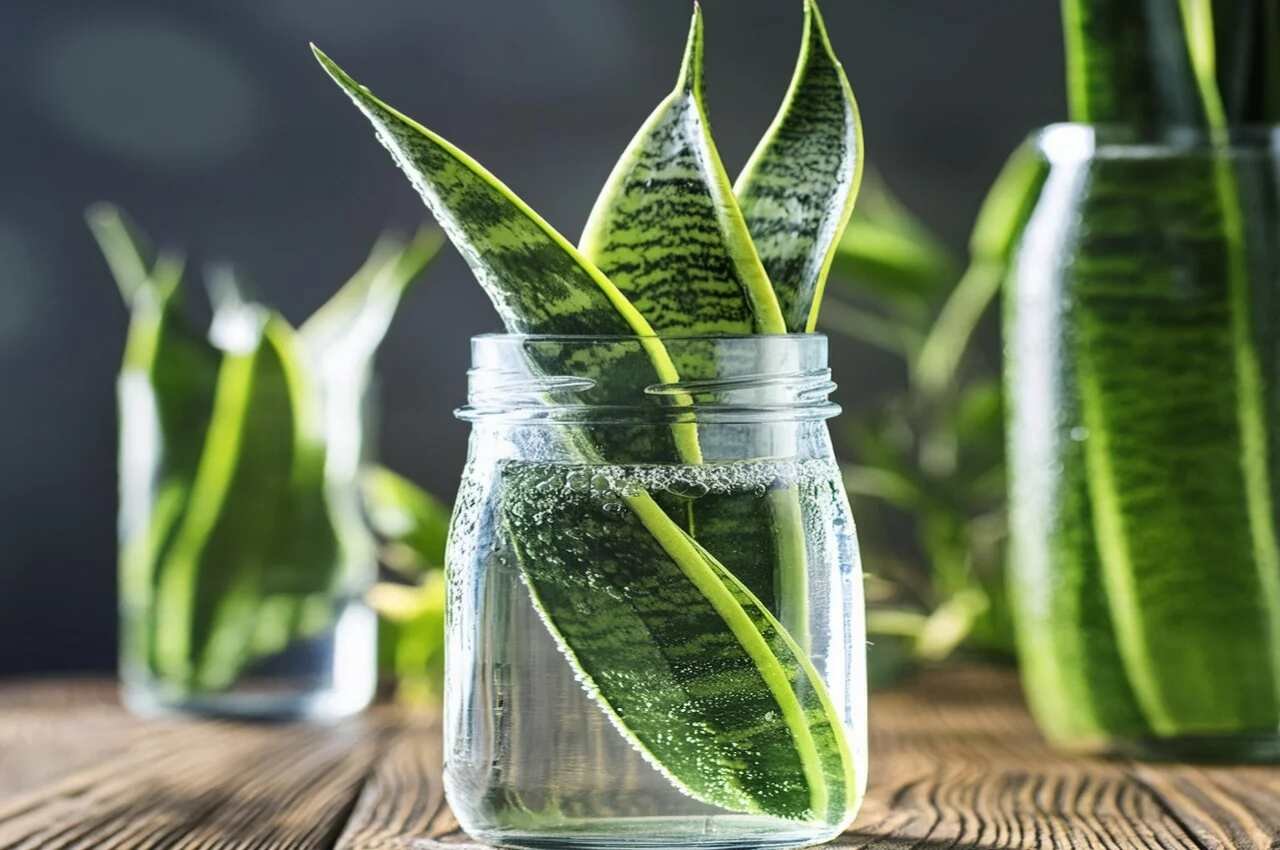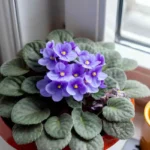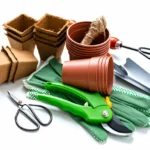Table of Contents
Snake Plant or Sansevieria Plant
The snake plant is well-known to gardeners for its beauty and air purification properties. They are happy with ease and little care. Whether you are a severe plant lover or a hobby gardener, you should have snake plants in your home.
They can take place in a small place, from the table desk to your bedroom, living room, or kitchen room. You will always be amazed by the beauty of the snake plant’s straight or twisted leaves. Everyone advises to keep snake plants indoors as they do not require extra space and care,
I also recommend keeping a variety of snake plants in your indoor garden.
Snake plants can grow in water; you may think what he is saying! But if you read our article, you will know how to grow snake plants in water.
Snake Plant Overview
The snake plant (Dracaena trifasciata) has dark green and yellow-bordered, lightly twisted, narrow leaves. They came from West Africa and Nigeria. They range in height from 65 to 95 cm (2-3 ft). You might be surprised that the snake plant also gives flowering. Snake plants also have funnier names, including St. George’s sword, mother-in-law’s tongue, and viper’s bow hemp. The snake plant is popular among gardeners worldwide, as it removes toxins from the air and purifies it. If you have a small space in the corner of the house suitable for keeping houseplants, keep them there to see some happy and healthy plants.
Snake Plant Can Grow In Water?
Snake plants thrive in water as they are adapted to water and thrive, avoiding threats such as predation.
Methods of growing snake plants in water
Snake plant multiplication is easy. You can breed your snake plant at home. Planting them is very easy compared to all other plants, and I have detailed below two methods of planting:
Materials we will need:
- The mother plant of the snake plant
- Scissors or scissors
- Rubbing alcohol or hand sanitizer
- Jar or vase
- Mulberry Peak
- One-time glass
- Stones for decoration (optional)

Seedlings from Small Cuttings Grow in Water
First, we will select a mother plant with enough branches. It is best to examine both leaves and roots. We will cut leaves but will not harm the mother plant. We will not take stressed plants. Even if we have any stressed plants, we will fix this before collecting seedlings from the plant. After the plant selection is done, we have to cut the leaves. We must clean the cutting knife or scissors with rubbing alcohol or hand sanitizer to save the mother plant from microbial attack.
Cut large cuttings into small pieces of 3-6 inches each. Cut the down part (inside the water) of the cutting into a “V” shape. Cuttings in a “V” shape produce roots in the cuttings and create many new shoots quickly.
Now, we will fill the one-time glasses with two-thirds of the water.
Insert a portion of the mulberry tree cutting in the center of the glass to make a balance. For this support, our snake plant cutting will perfectly hang in the glass. We can also use toothpicks similarly on both sides of the cutting. Remember that the part of the cutting where the roots are supposed to come has to be wet with water. In this way, we can produce seedlings from small cuttings.
Seedling From Large Cutting
In the second method, we will grow a plant from a large-size cutting. In this method, we will cut the cutting part as described before. We will dip the extensive cutting into a jar or vase, and the root will eventually come out after our propagation is done.
https://www.youtube.com/watch?v=ugVF34pC8zw
Tips
You have your mother plant in the ground. Lift off the ground. Clean any cocopeat or soil stuck to the roots with a soft brush. After that, you can fill a glass jar full of water or two-thirds. Place your mother plant in this glass jar. Keeping it like this will give roots within 25-30 days. My snake plant had roots of about 1.5 cm at this point. After another week, at about 35/36th days, 1.5-2 inches of root growth happened.
Care for Growing in Water
Light
Each plant produces its food according to the rules of nature, in which light plays a significant role. You can place the snake plant in the east or south-facing window of your home to grow it in water. Please keep it in bright, indirect light, not direct sunlight. Morning light is best for snake plants; they grow well if they get at least 2 to 4 hours of sunlight.

Water
It is best to change the water once every five to seven days. If the water remains unchanged over time, it may develop algae, which can damage the plant’s roots. You should be aware of it. If you don’t change the water regularly, the mosquitoes can breed in the water. But if you can place your snake plant in your home aquarium, you don’t need to worry about mosquitoes. The fish in the aquarium will eat mosquitoes and mosquito larvae.
Temperature
The temperature should be not less than 50-70°F and 20°C.
Stone
Stones of different sizes, shapes, and colors are available. These stones may be used to improve the aesthetics of your house. It is best to use aquarium rocks. After bringing the stones home, you need to wash them and remove dust. Wash the rocks carefully by applying force with your hands. If you use stones in the water, clean them every few days. Exposure to water causes algae to grow on rocks, which can alter plant growth, including root growth.
Fertilizer
You can use root hormones to induce rooting in cuttings. You can also use vinegar if you don’t have root hormones at home. It helps cuttings to produce roots quickly.
Tips
Liquid fertilizers and hydroponic fertilizers are used on plants in water. Mix them with water once a month. This will help the plant grow roots, leaves, and new seedlings.
Jar
Jars or vases are made of clear glass. Using a jar or vase makes snake plant roots visible from the outside. If the roots or cuttings start rotting, you can catch them quickly and take quick action. You can choose not to spread tall-type jars for snake plants and select throwing-type jars for Sansevieria.
Advantages of growing from soil to water
To increase snake plant numbers, we propagate the leaves from cuttings. While there are many advantages when we plant in the soil, there are also disadvantages. I think it’s straightforward to grow plants in water.
If you plant cuttings in the ground, you need to prepare the soil and water regularly. It will be difficult to understand how many days the cuttings are taking root.
Growing in water requires a one-time cup or jar of water, which saves your time and effort while you can do your other chores or gardening. If you have cuttings in water, you can observe from the outside. You can sense the condition of roots, which you can’t if they are in the ground.
Cutting in water requires less space than cutting in soil. You can do this in one corner of your room. The main point is that you can do seedlings easily, whether experienced or not.
From my experience, you should water the snake plant while planting when the cutting roots start and when the roots are big enough, and then you can transfer them to the perfect soil.
Snake plants used in decoration
You can decorate your room or office desk with a snake plate. It can be combined with several types of stones in pots and snake plants in water. Finishing the jar with a layer of black and white rocks looks quite impressive, which multiplies the beauty of your desk or room.
FAQ
Are snake plants harmful to dogs and cats?
= Yes, it is harmful to dogs and cats. If you have a snake plant in your house and your pets are there, then you should remove the snake plant quickly.
How much light do snake plants need?
= Bright indirect light for fast growth. Medium for medium growth. Dim for slow growth. Try it.
Best way to make snake plants thrive & fill the pot?
= You don’t have to rush to grow snake plants; you need to do some simple care. Avoid overwatering them and keep them away from direct sunlight. Best of luck.
Share this post
Share on facebook
Share on twitter
Share on linkedin
Share on reddit
Share on pinterest
Share on whatsapp
Share on email
Share on telegram










